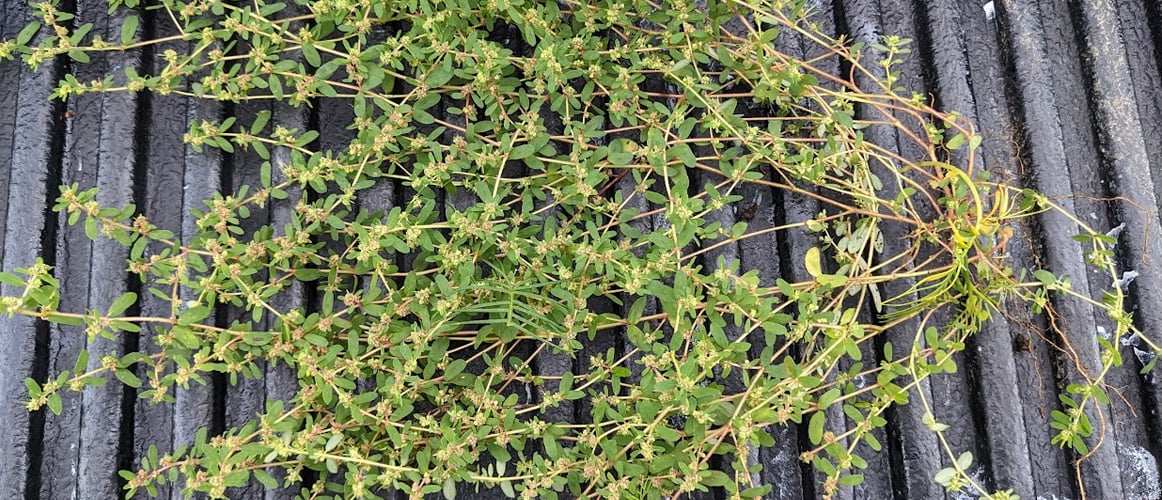Spotted spurge, or Euphorbia maculata, is a low-growing summer annual. It is problematic because of its rapid prostrate, or flat and low, growth pattern which can form mats and crowd out desirable plant material including turf. It is also very tolerant of mowing, as it usually lays lower than the mowing height. There are multiple species of spurges, however this one is called spotted spurge.
Spotted spurge can be present in lawns and ornamental beds, but it is also well adapted for survival in harsh environments like sidewalk cracks. Dry and compacted soil conditions are no match, as this weed will thrive during the heat of the summer. 
It has tiny oval or ovate leaves with a small reddish to purple blotch in the center. As summer progresses, it will form pinkish flowers on the hairy or pubescent stems leading to the production of large amounts of seed which will germinate throughout the growing season.
Germination is best when temperatures are between 75 and 80 F, but they have been known to sprout as low as 60 F and as high as 100 F. These temperatures can be seen from February through November depending on your geography.
Besides other spurge species, many other weeds can be confused with spotted spurge including purslane and carpetweed.
There is one easy attribute which will make spurge identification definitive. When stems are broken, all spurges will ooze a white, milky substance. This material is also what makes this more troublesome. This ooze can be toxic to animals, particularly sheep for which, if grazed upon, can be fatal even in lower amounts.

Control options include pulling or maintaining thick, healthy turf in lawns or mulch in beds. The seeds require sunlight for germination, so dense turf canopy or a couple inches of mulch tends to be fairly effective in reduction of population.
Chemical controls include pre-emergent herbicides such as pendimethalin (pendulum), dithiopyr, prodiamine (Barricade), and isoxaben are very effective. For bed usage, flumioxazin (SureGuard) will also provide excellent control. These applications should be made prior to soil temperatures reaching 55 F and should be repeated as necessary.
Post-emergent applications of most phenoxy herbicides including 2,4-D formulated with MCPP, Dicamba Tricloyr, Fluroxypyr, and others typically yield good results on younger plants. More mature weeds may require multiple applications, so early detection and treatment is preferred. 
Alternately, herbicides such as sulfentrazone (Dismiss) or in combination with others (Surge, Avenue South, and Speedzone Southern) will provide good control. Pay special attention to turfgrass species, in particular St Augustinegrass, which will be sensitive to many herbicides.
Contact the Ewing Technical Services Team if there are any questions.




